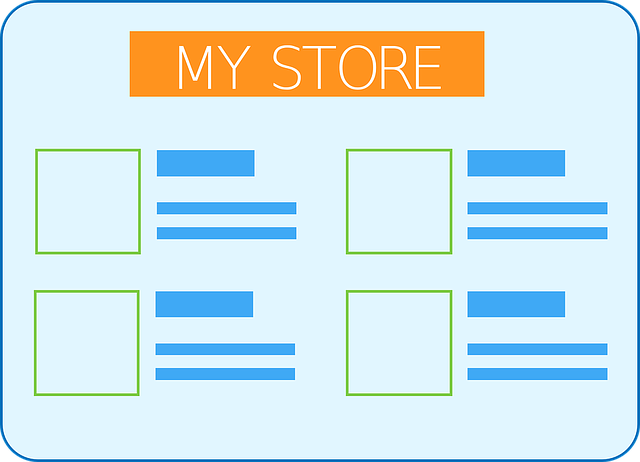Evaluating an AI Chatbot for an e-commerce website involves assessing key metrics like user satisfaction (CSAT) and net promoter score (NPS) to gauge customer experience. Other crucial indicators include conversation rate, response times, error rates, and direct financial return on investment (ROI). Beyond financial metrics, chatbots offer indirect benefits such as enhanced engagement, improved operational efficiency, and data-driven decision-making capabilities, ultimately fostering long-term business growth in the digital landscape.
Evaluating the return on investment (ROI) of an AI chatbot is essential for businesses looking to optimize their ecommerce strategies. This article guides you through the process, focusing on key performance metrics and financial benefits. We’ll explore how to calculate direct ROI for an ecommerce chatbot, factoring in increased sales, reduced customer support costs, and enhanced user engagement. Additionally, we delve into indirect advantages and long-term impacts, showcasing the broader value a chatbot brings to your website.
- Understanding Key Metrics for Chatbot Performance Evaluation
- Calculating Direct Financial ROI of an Ecommerce Chatbot
- Beyond Financials: Measuring Indirect Benefits and Long-term Impact
Understanding Key Metrics for Chatbot Performance Evaluation

When evaluating the performance of an AI Chatbot, particularly on an ecommerce website, understanding key metrics is paramount. Metrics like user satisfaction (CSAT) and net promoter score (NPS) gauge customer experience by measuring how helpful, friendly, and effective the chatbot’s interactions are. For instance, higher CSAT ratings indicate that customers find the chatbot useful, while NPS scores help identify loyal users who are likely to advocate for the chatbot’s presence on your site.
Another crucial metric is conversation rate, which tracks the percentage of website visitors who engage with the chatbot. This metric offers insights into the chatbot’s ability to captivate and assist potential buyers. Additionally, tracking time spent interacting with the chatbot provides insight into user engagement depth, while error rates and response times measure operational efficiency and customer frustration levels. By analyzing these key performance indicators, ecommerce businesses can fine-tune their AI Chatbots to deliver optimal value and enhance sales conversion.
Calculating Direct Financial ROI of an Ecommerce Chatbot

Calculating the direct financial return on investment (ROI) for an AI chatbot integrated into an e-commerce website is a straightforward yet essential step in understanding the bot’s impact. This measurement involves comparing the revenue generated with the chatbot against the costs incurred to implement and maintain it. By examining the increase in sales, average order value, or customer acquisition cost reduction, businesses can gauge the financial health of their chatbot investment. For instance, if a chatbot leads to a 10% increase in average order value over six months, this direct financial impact can be a powerful indicator of success.
For e-commerce businesses, the integration of AI chatbots offers various benefits beyond direct financial ROI. Enhanced customer engagement, improved response times, and personalized product recommendations are just a few ways chatbots can drive operational efficiency and customer satisfaction. These indirect but significant advantages contribute to long-term business growth and should be considered alongside the measurable financial metrics when evaluating the overall value of an ecommerce chatbot.
Beyond Financials: Measuring Indirect Benefits and Long-term Impact

Beyond the traditional financial metrics, evaluating the success of an AI chatbot for an e-commerce website involves recognizing its indirect benefits and long-term impact on various aspects of business operations. These chatbots can significantly enhance customer experience by providing instant support, personalized product recommendations, and 24/7 availability, ultimately increasing customer satisfaction and loyalty.
The value of a chatbot extends to improved operational efficiency, reduced customer service costs, and better data collection for informed decision-making. By analyzing customer interactions, AI chatbots offer valuable insights into purchasing behavior, enabling businesses to tailor marketing strategies and optimize product offerings. This long-term strategic advantage can lead to increased sales, market competitiveness, and sustained growth in the digital landscape.
Calculating the return on investment (ROI) for an AI chatbot is a multifaceted process, especially for those integrated into ecommerce websites. By understanding key metrics like user engagement and satisfaction, direct financial returns through increased sales and reduced support costs, as well as indirect benefits such as improved customer retention and enhanced brand reputation, businesses can truly harness the potential of chatbots. While quantifying immediate financial gains is crucial, recognizing the long-term impact on customer interactions and business growth ensures a comprehensive evaluation of an ecommerce chatbot’s success.
